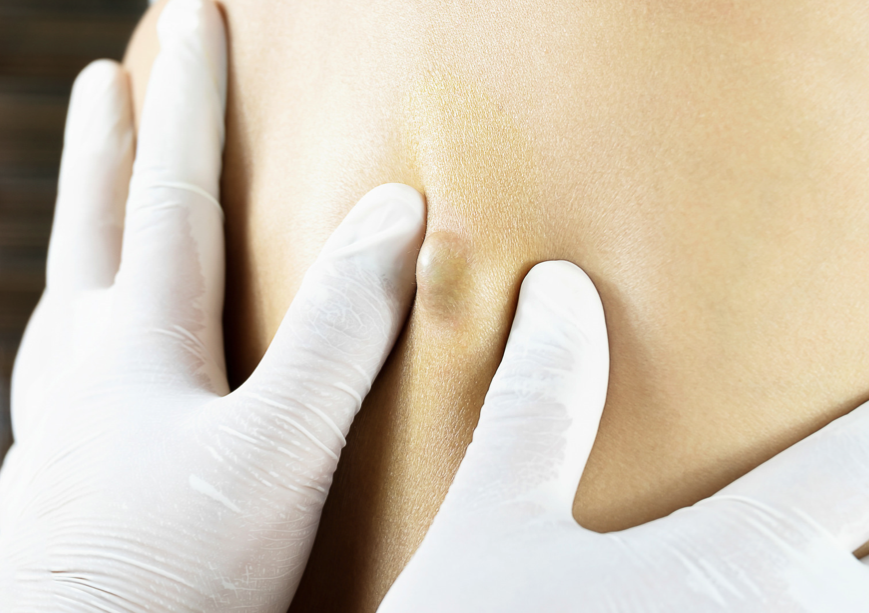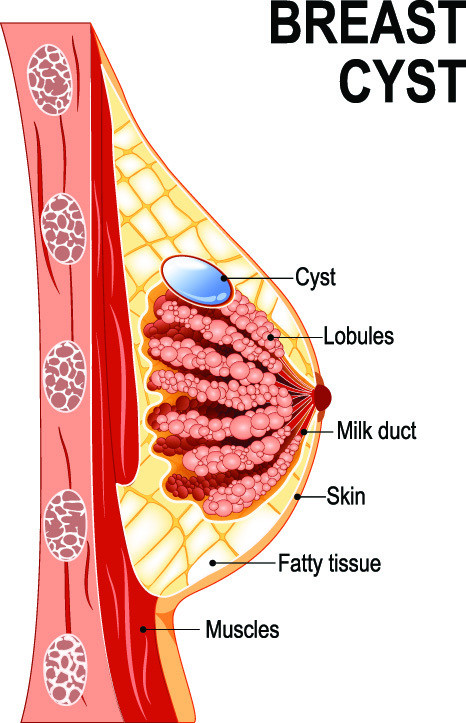Definition
The bartholin glands are small glands, approximately 0.5 cm in size, located on the right and left sides at the base of the vaginal opening. These glands secrete mucus that serves as a vaginal lubricant. Typically, the glands are not palpable by hand. However, if these glands become obstructed, the mucus produced by the glands will accumulate, eventually leading to swelling filled with fluid that appears as a sac, commonly referred to as a bartholin cyst.
If a bartholin cyst is left untreated and becomes infected by bacteria, it can develop into a bartholin abscess, a condition where the bartholin gland is exposed to bacteria causing inflammation. Bartholin cysts and abscesses are commonly found in women of reproductive age, and the incidence decreases after menopause.
Approximately 2% of women of reproductive age experience this condition. If enlargement of the bartholin gland is found in women over 40, further examination should be conducted to check for the possibility of tumors or malignancies. Although not life-threatening, bartholin cysts and abscesses can cause aesthetic concerns and affect the quality of life.
Causes
Occasionally, the etiology of the obstruction in the Bartholin gland remains uncertain. It is suspected that the obstruction occurs due to injury, childbirth, or infection. The bacteria most commonly causing cysts are Escherichia coli and Staphylococcus aureus.
An abscess can also occur when a cyst in the bartholin gland becomes infected by bacteria. In addition to the above bacteria, bacteria causing sexually transmitted infections (STIs) such as chlamydia and gonorrhea are also believed to cause bartholin abscesses, especially if STIs are not properly treated. It is found that more than 8% of bartholin abscess cases are caused by more than one type of bacteria. Besides these bacteria, the following bacteria can also cause bartholin gland abscesses:
- Pseudomonas aeruginosa
- Streptococcus species
- Klebsiella varicola
Risk Factor
The risk factors for bartholin gland abscesses and cysts include:
- Women of reproductive age, especially those aged 20-30
- A history of Bartholin cysts
- A history of injury, wounds, or surgical procedures on the vaginal area
- Post-childbirth procedures with episiotomy wounds (a cut between the vaginal opening and anus to facilitate childbirth)
Symptoms
Cysts and abscesses generally have appearances that are difficult to differentiate. Most bartholin abscess cases develop from bartholin cysts, so the symptoms are similar to those of bartholin cysts. However, bartholin abscesses can also form without being preceded by a bartholin cyst.
The diameter of a bartholin cyst lump is generally around 1-3 cm. The lump is located on one side of the vaginal opening and is usually not painful. Pain may arise if the lump is large enough and may sometimes be accompanied by pain during sexual intercourse. If fluid is released from the lump, it is usually not pus-filled.
Meanwhile, bartholin abscesses can cause the following symptoms:
- A lump under the skin on one or both sides of the vaginal opening
- The lump feels very painful and appears red
- Pain when walking, sitting, or during sexual intercourse
- A sensation of heat and discomfort in the area of the lump
- Pus may drain from the lump
- Fever
Diagnosis
Medical Interview
The doctor will conduct a comprehensive examination to establish a diagnosis, starting with an interview, a physical examination, and further tests if necessary. The doctor will first ask about the main complaints you are experiencing and any accompanying symptoms. The doctor will also inquire about your health history, any diseases you have had, sexual behavior, and any treatments you have undergone.
Physical Examination
For the physical examination, in addition to checking vital signs, the doctor will also perform a local examination of the genital area. If the abscess case is severe, the doctor will typically check for any walking disturbances. The doctor will assess the size, color, location, and consistency of the lump. When palpated, signs of infection in the lump, temperature changes in the lump, and the level of pain felt by the patient will be evaluated. In severe abscess cases, pus-filled fluid is usually found in the abscess.
Diagnostic Examinations
Supporting examinations are rarely performed in bartholin abscess cases. If conducted, the doctor will perform a culture swab test. The fluid contained in the abscess will be taken and examined in a laboratory to identify the type of bacteria causing the abscess. This test can help the doctor choose the appropriate medication.
Additionally, the doctor may conduct a sexually transmitted infection (STI) test if there is suspicion of an STI. If an STI is found, treatment for the STI and bartholin gland cyst/abscess will be carried out simultaneously.
Although rare, the doctor may also conduct a biopsy if there is suspicion that the lump in the genital area could be a tumor or malignancy. Biopsies are typically performed on women aged ≥40 years who have a vaginal lump.
Management
Sitz Bath
In cases of Bartholin cysts or abscesses where the fluid has drained, the pain is not severe, and the condition is not caused by a sexually transmitted infection, the doctor may recommend a sitz bath. It is a method of soaking in warm water. While it may not immediately eliminate the abscess or cyst, this method is quite effective in providing comfort and reducing pain. Soaking in a sitz bath can be done 3–4 times a day for 10–15 minutes. Additionally, pain relief medication may also be prescribed.
Antibiotics
Antibiotics are given to eliminate the bacteria causing the abscess. The doctor usually prescribes antibiotics before and after procedures or to treat sexually transmitted infections, a risk factor for Bartholin abscesses. It is important to note that antibiotics can only be prescribed and monitored by a doctor.
Incision Drainage
If the lump tends to enlarge and does not improve, the doctor will perform an incision drainage procedure. It is a common procedure because it is simple, effective, and does not take long. The doctor may use local or general anesthesia. During this procedure, the doctor will make an incision in the lump and drain the fluid inside. The fluid will be removed using a catheter or special tube. The catheter will remain in the Bartholin gland for 6 weeks to allow all the fluid to drain completely.
Marsupialization
This procedure is a treatment option for recurrent bartholin cysts and abscesses. An open incision is made to create a pocket to allow the fluid in the abscess to drain. The doctor will then stitch the area, leaving the "pocket" open. Sometimes a catheter may be placed to expedite the fluid drainage process.
Bartholin Gland Removal
If, after marsupialization, the lump persists, the doctor may consider this treatment option, although this procedure is rarely performed.
Complications
Bartholin gland cysts and abscesses rarely cause serious complications. Surgical procedures also rarely result in complications. However, possible complications from bartholin cysts and abscesses include:
- Pain during sexual intercourse (dyspareunia)
- Cellulitis (serious bacterial infection of the deeper layers of skin)
- Excessive bleeding
Prevention
There are no specific steps to prevent bartholin cysts and abscesses, but there are ways to reduce the risk of the disease, including:
- Using condoms to prevent sexually transmitted infections
- Maintaining vaginal hygiene by avoiding washing the vagina with soap; simply rinse the outer part with clean water
- Regularly checking your body for abnormal lumps so they can be treated promptly
- Undergoing screening for sexually transmitted infections
When to See a Doctor?
See a doctor immediately if you notice a lump in the vaginal area that does not improve even after soaking in warm water and taking pain relief medication. Additionally, if you are at high risk for sexually transmitted infections, it is advisable to undergo regular screenings to prevent bartholin cysts and abscesses.
Looking for more information about other diseases? Click here!
- dr Hanifa Rahma
Lee WA., Wittler M., (2022) Bartholin Gland Cyst. Retrieved 1 August 2022 from https://www.ncbi.nlm.nih.gov/books/NBK532271/
Medscape – Bartholin Gland Diseases. (2017). Retrieved 1 August 2022 from https://emedicine.medscape.com/article/777112-overview#:~:text=Bartholin%20abscesses%20result%20from%20either,attributable%20to%20sexually%20transmitted%20pathogens
WebMD – Bartholin’s Cyst (2020). Retrieved 1 August 2022 from https://www.webmd.com/women/bartholins-gland-cyst












